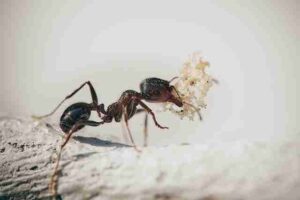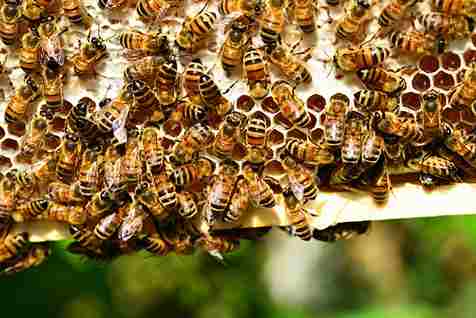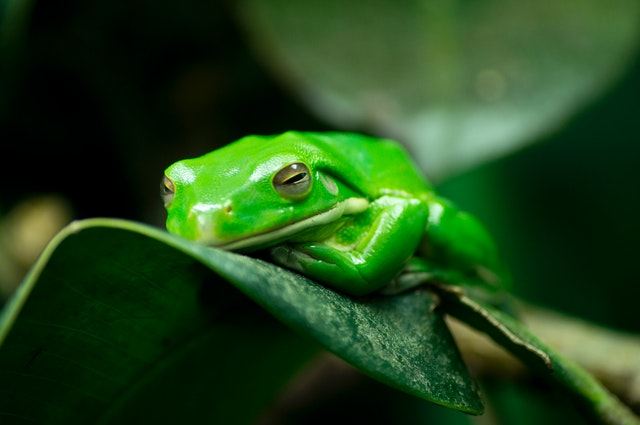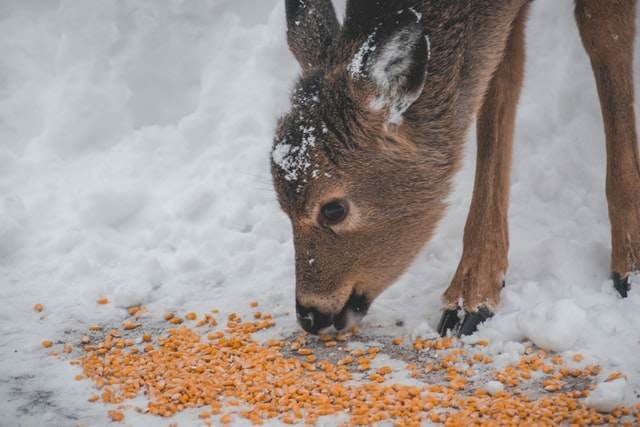Do Ants Have Tongues? (A Complete Look At Ants Taste Buds)
Besides having one of the largest populations in the world of insects and the animal kingdom generally. There’s virtually no landmass they haven’t colonized, which is why they seem to be everywhere. But it’s not only the numbers they have, they also have the largest brain compared to their body size which explains their high level of intelligence.
Like many insects, ants undergo complete metamorphosis from the larva stage all the way to adults. But it’s not exactly clear how they talk, feed, or taste food. So, do ants have tongues?
Ants do not have tongues like vertebrae, but they have a pale tube-like structure or palps that look like appendages or fingers around their mouth. These palps are analogous to the tongues found in vertebrates though their structure is different. Together with their feet, ants use their palps to taste things.

Do Ants Have Taste Buds?
Ants have a mouth hidden by special jawbones known as mandibles. The ant uses the mandibles to cut, grab, and bite. Under the mandibles, you will find the palps. These palps (tube-like structures) serve as taste buds. Like most insects, ants also have taste receptors in their feet.
Like caterpillars, ants can taste sweet and bitter things. For instance, they are repelled by the bitter smell or taste of lemon. Likewise, they are attracted to sugar and other sweet things. In general, ants are more sensitive to sweet compounds than other flavors like bitter, sour, salty, and umami. So, it’s no wonder they often go after sugary foods in your home or garden.
All the taste flavors mentioned above serve the same function in ants as they do in mammals and other animals. In other words, sugar tastes the same way in your mouth as it does in an ant’s mouth.
For instance, as a human, when you taste something sweet, you want to eat more of it because your brain tells you to. Likewise, when you taste something bitter, you want to stop eating immediately. The same response plays out in ants. They will continue eating sweet food and avoid bitter ones.
A Closer Look At An Ant’s “Tongue”
Before we delve into more detail about what an ant’s tongue looks like, it would help to start from the mouth. An ant’s mouth is basically made up of two sets of jaws, called mandibles.
The mandibles are arguably the most important part of its anatomy. And that is because it does quite a lot. Ants do not have forelegs for grasping things; they use the mandibles for that.
The mandibles serve various functions. First, as external teeth, they are used to break down food as well as for hunting, digging, cutting, and biting. They also hold and carry things, just like human hands.
In addition, the construction of their nests, collection of food, and attacking predators are all performed using mandibles.
Behind the blade-like mandibles is the ant’s mouth which has two palps hanging down. This serves as the ant’s “tongue”. Like the human tongue, it is used for tasting and sucking up food. In reality, the tongue aids the mouth and mandibles in carrying out several other functions.
An ant will normally retract its tongue when it’s not feeding.
Getting Rid Of Ants In Your Home
Just like any other pest, ants can make a mess in your home if allowed to thrive. Since they eat almost anything, it is not uncommon to see them making nests in various parts of your home.
There are many home remedies for removing ants and other pests. These include the use of salt, white vinegar, pepper, orange or lemon peels, chalk, and peppermint. For instance, you can create a vinegar solution that is 50 parts water and 50 parts white vinegar; use it to wipe the floors and other areas where the ants are.
For faster results, you can also invest in commercial ant killers like Terror T300, Terror T334, or Syngenta Advion. All these products are ant bait and can be used to get rid of ants within and outside the home. The T300 and T334 are best used for indoor surfaces while the Syngenta Advion is perfect for outdoor use.
Other tips for preventing ants in your home include:
- Cleaning up spills as soon as possible
- Sweeping the floors to get rid of crumbs at all times
- Properly storing food items in shelves, cupboards, or sealed plastic bags where ants cannot smell them.
Conclusion: Do Ants Have Tongues?
To sum it up, ants do not have tongues like humans, but they have something similar, called palps, which enable them to taste their food. So, the next time you store something sweet, be reminded that, just like you, they crave sweet foods. In fact, an investigation into the taste buds of ants may even reveal a lot about the human tongue functions.
You can get rid of ants using home solutions or you can invest in a commercial ant killer or deterrent like the ones we recommend above.
More Resources
https://wildaboutants.com/2010/01/21/ant-tongues/
https://www.antkeepers.com/facts/ants/anatomy-of-ants/







